

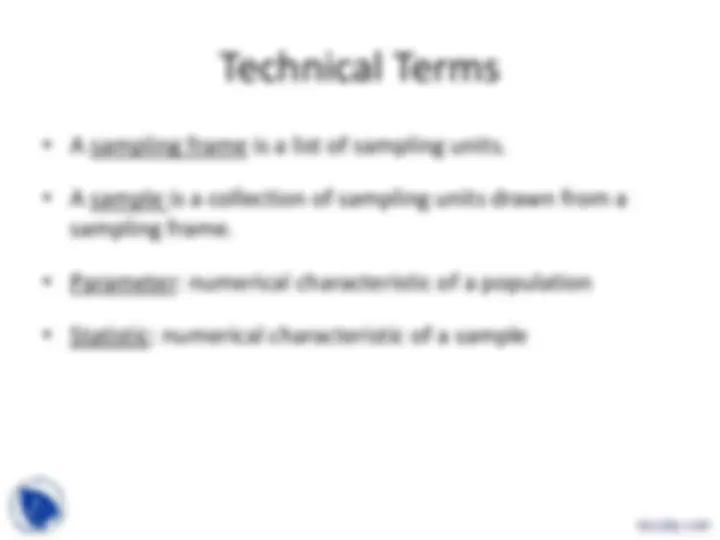
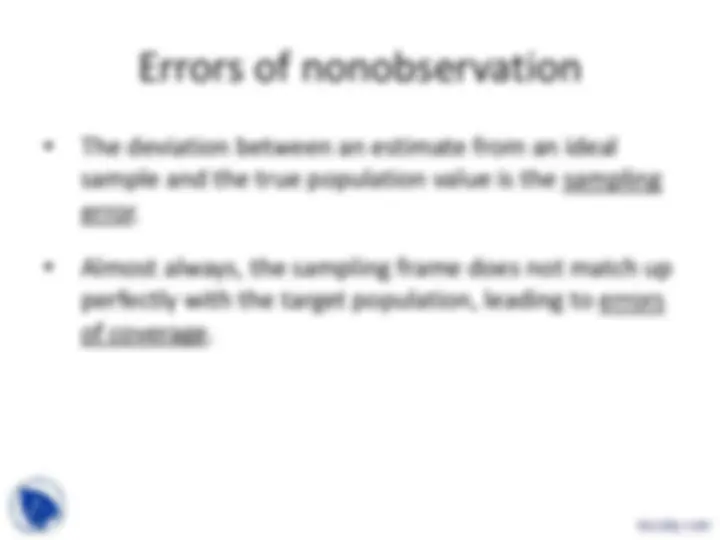

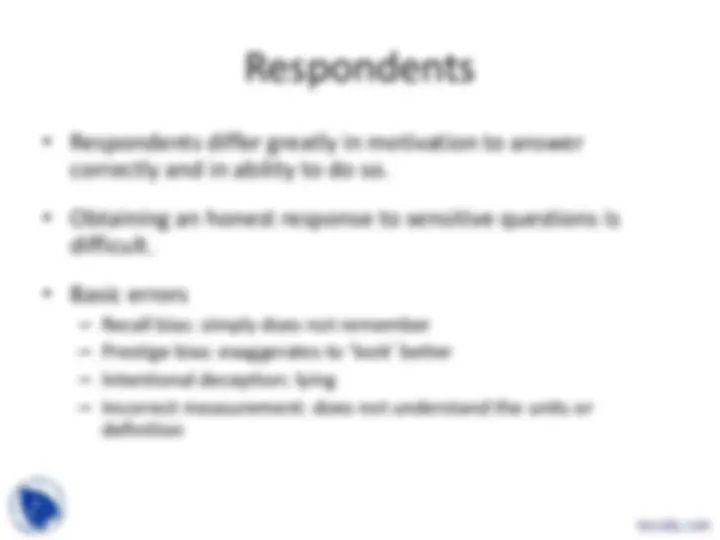
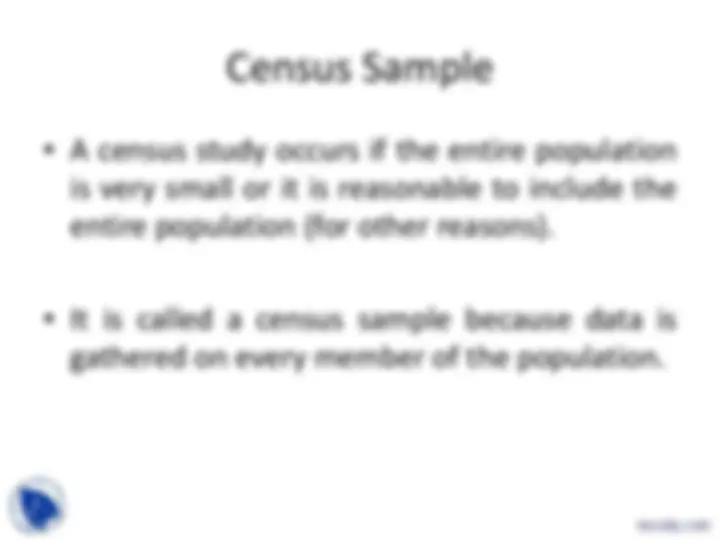
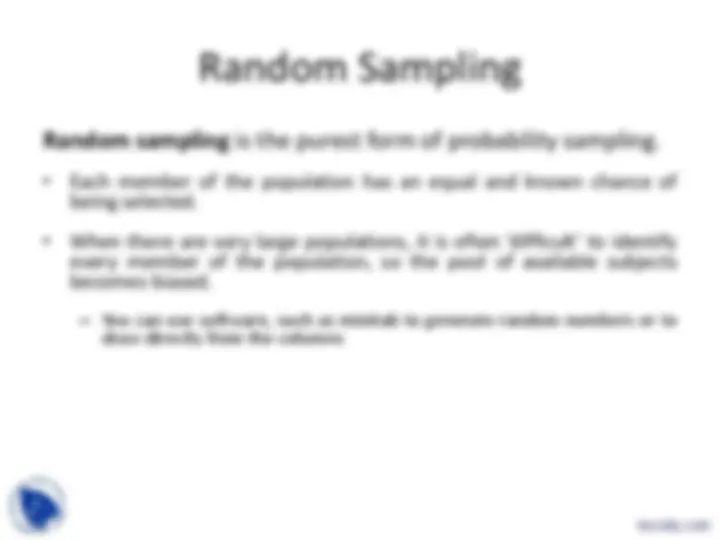
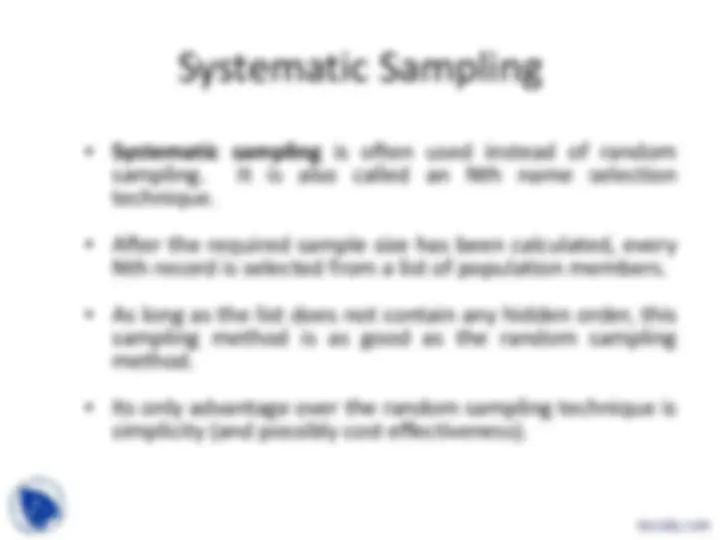
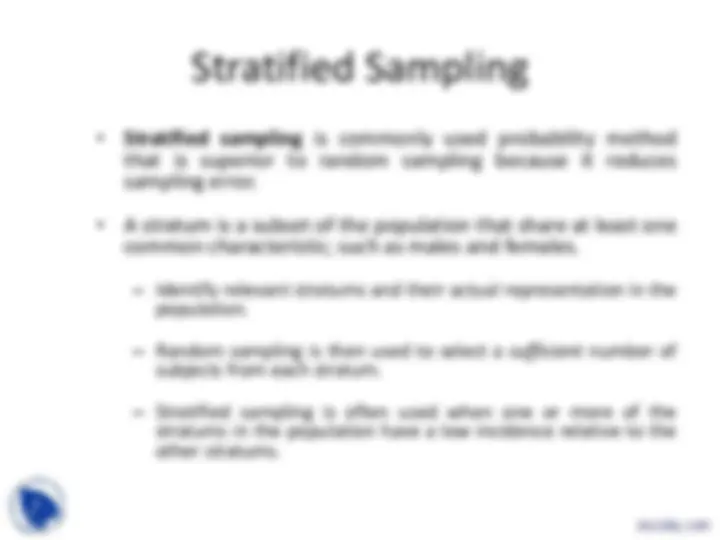
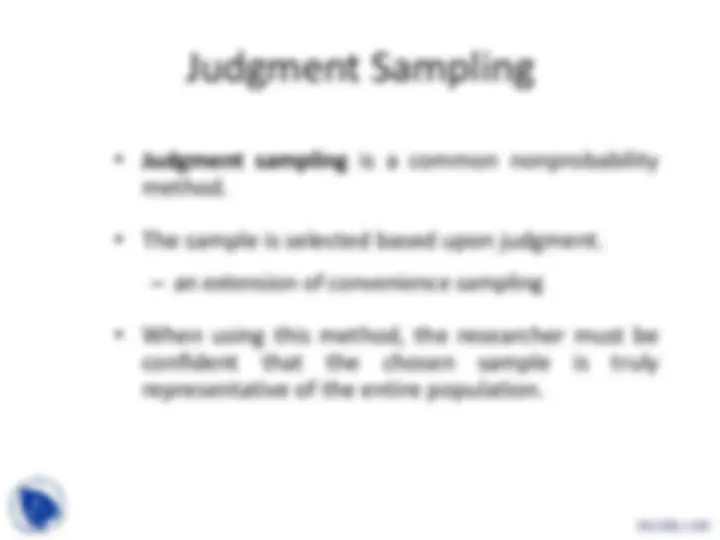
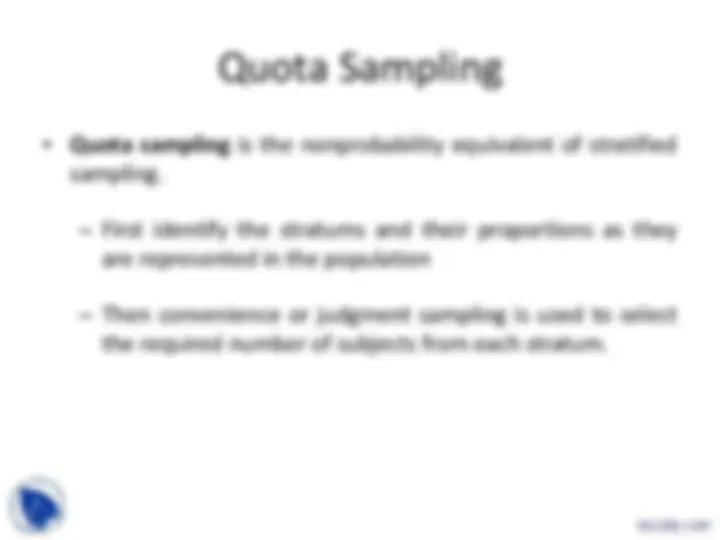
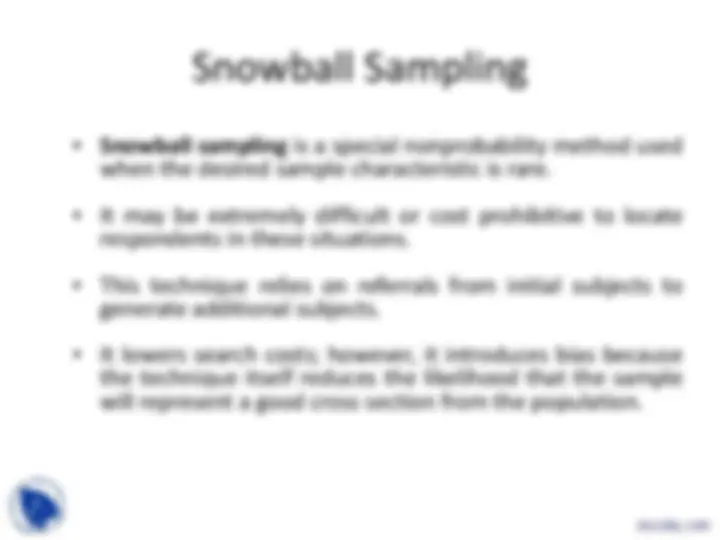

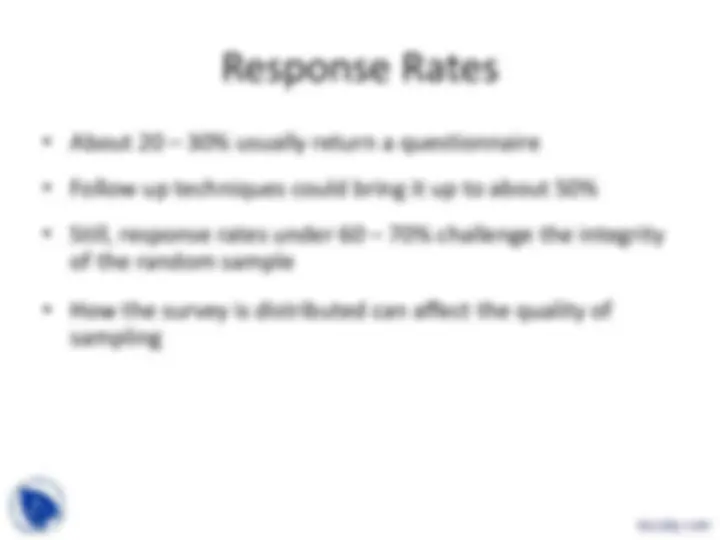


Study with the several resources on Docsity

Earn points by helping other students or get them with a premium plan


Prepare for your exams
Study with the several resources on Docsity

Earn points to download
Earn points by helping other students or get them with a premium plan
Community
Ask the community for help and clear up your study doubts
Discover the best universities in your country according to Docsity users
Free resources
Download our free guides on studying techniques, anxiety management strategies, and thesis advice from Docsity tutors
The purpose of this course is to familiarize participants with basic features of the design and implementation of surveys and acquaint them with principles and underlying theory from disciplines that traditionally use surveys. This lecture includes: Sampling Methods, Target Population, Technical Terminology, Population, Sampling Units, Technical Terms, Sampling Frame, Parameter, Statistic, Errors of Nonobservation
Typology: Slides
1 / 22

This page cannot be seen from the preview
Don't miss anything!















sampling frame.
Random sampling is the purest form of probability sampling.
sampling.